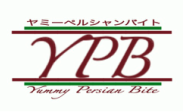インゲン豆のカロリーと栄養価
English
料理を始める前にへたとしっぽを取り除きます。甘くてしゃきしゃきした新鮮なインゲン豆を手に入れたらできるだけ小さく切ってください。古いものや熟しているものは対角線上にきってください。同じように火が通るようになるべく同じ長さに切るようにしましょう。
インゲン豆は通年手に入りますが、夏から初秋にかけて「6月から10月」にフレッシュな状態で食べるのが一番です。インゲン豆は甘味をもっていて性質は温性です。
インゲン豆は通年手に入りますが、夏から初秋にかけて「6月から10月」にフレッシュな状態で食べるのが一番です。インゲン豆は甘味をもっていて性質は温性です。
科学的発見:
インゲン豆は健康維持に必要な多くの栄養素を含んでいます。これはインゲン豆の含む栄養素とその効果です。
- ビタミン A 肌の老化を防ぎます。血中のコレステロール濃度が高くなるのを防ぎ、抗ガン効果もあります。
- ビタミン K カルシウムの吸収を助けます。傷やけがの治りが早くします。
- ビタミン B9(葉酸)は細胞分裂とDNA合成の必須要素です。妊娠中にビタミン9 を含んだ食物をとっていると出産時に神経管が傷つくのを防ぎます。
- ビタミン C は免疫システムを向上させ、感染を防ぎ、やけどや傷の治りを良くします。また肌の老化を防ぐ効果もあります。
選び方と保存の仕方:
明るい緑色で、傷や黒いしみのないものを選びましょう。しっかりしていて、負ったときにパキッと音のするものがよいインゲン豆です。
インゲン豆は洗わないでポリ袋に入れ、冷蔵庫の中に保存しましょう。一週間くらい保存できます。
インゲン豆は洗わないでポリ袋に入れ、冷蔵庫の中に保存しましょう。一週間くらい保存できます。
Sources
Image Credit
http://www.onlineholistichealth.com/
http://nutritionfacts.org/
http://fnic.nal.usda.gov/food-composition/individual-macronutrients-phytonutrients-vitamins-minerals/vitamins-minerals
http://www.stylecraze.com/
http://www.whfoods.com/whfoodskitchen.php
Anthon GE and Barrett DM. Characterization of the temperature activation of pectin methylesterase in green beans and tomatoes. J Agric Food Chem. 2006 Jan 11;54(1):204-11. 2006.
Baardseth P, Bjerke F, Martinsen BK et al. Vitamin C, total phenolics and antioxidative activity in tip-cut green beans (Phaseolus vulgaris) and swede rods (Brassica napus var. napobrassica) processed by methods used in catering. J Sci Food Agric. 2010 May;90(7):1245-55. 2010.
Luthria DL and Pastor-Corrales MA. Phenolic acids content of fifteen dry edible bean (Phaseolus vulgaris L.) varieties. Journal of food composition and analysis, 2006; 19(2-3): 205-211. 2006.
Oomah BD, Corb A and Balasubramanian P. Antioxidant and Anti-inflammatory Activities of Bean (Phaseolus vulgaris L.) Hulls. J. Agric. Food Chem., 2010, 58 (14), pp 8225-8230. 2010.
Rickman JC, Barrett DM and Bruhn CM. Nutritional comparison of fresh, frozen and canned fruits and vegetables. Part 1. Vitamins C and B and phenolic compounds. J Sci Food Agric 87:930-944 (2007). 2007.
http://www.onlineholistichealth.com/
http://nutritionfacts.org/
http://fnic.nal.usda.gov/food-composition/individual-macronutrients-phytonutrients-vitamins-minerals/vitamins-minerals
http://www.stylecraze.com/
http://www.whfoods.com/whfoodskitchen.php
Anthon GE and Barrett DM. Characterization of the temperature activation of pectin methylesterase in green beans and tomatoes. J Agric Food Chem. 2006 Jan 11;54(1):204-11. 2006.
Baardseth P, Bjerke F, Martinsen BK et al. Vitamin C, total phenolics and antioxidative activity in tip-cut green beans (Phaseolus vulgaris) and swede rods (Brassica napus var. napobrassica) processed by methods used in catering. J Sci Food Agric. 2010 May;90(7):1245-55. 2010.
Luthria DL and Pastor-Corrales MA. Phenolic acids content of fifteen dry edible bean (Phaseolus vulgaris L.) varieties. Journal of food composition and analysis, 2006; 19(2-3): 205-211. 2006.
Oomah BD, Corb A and Balasubramanian P. Antioxidant and Anti-inflammatory Activities of Bean (Phaseolus vulgaris L.) Hulls. J. Agric. Food Chem., 2010, 58 (14), pp 8225-8230. 2010.
Rickman JC, Barrett DM and Bruhn CM. Nutritional comparison of fresh, frozen and canned fruits and vegetables. Part 1. Vitamins C and B and phenolic compounds. J Sci Food Agric 87:930-944 (2007). 2007.

